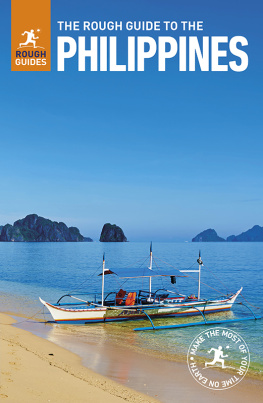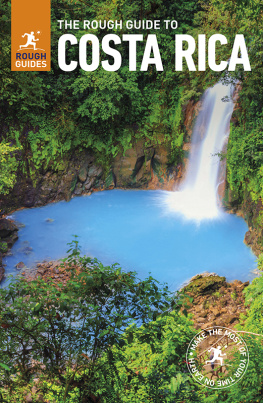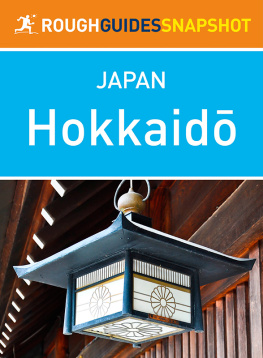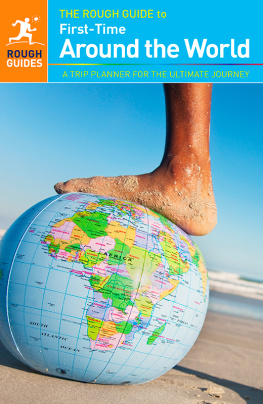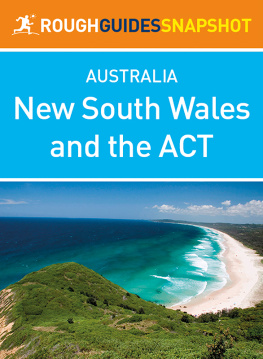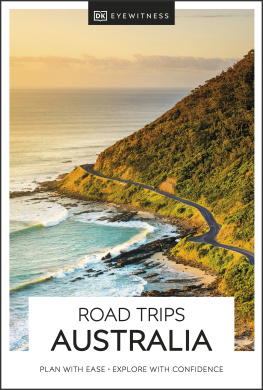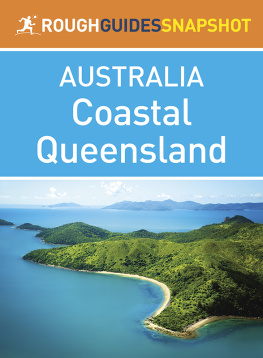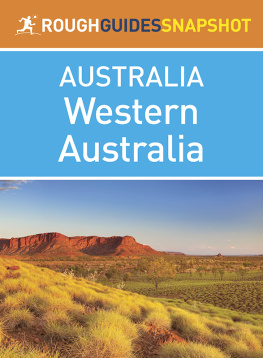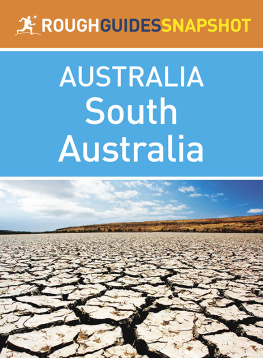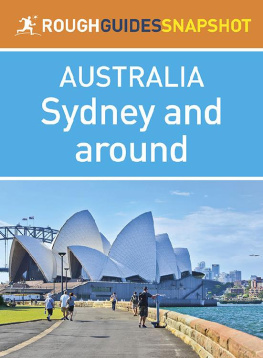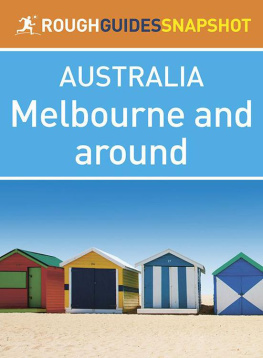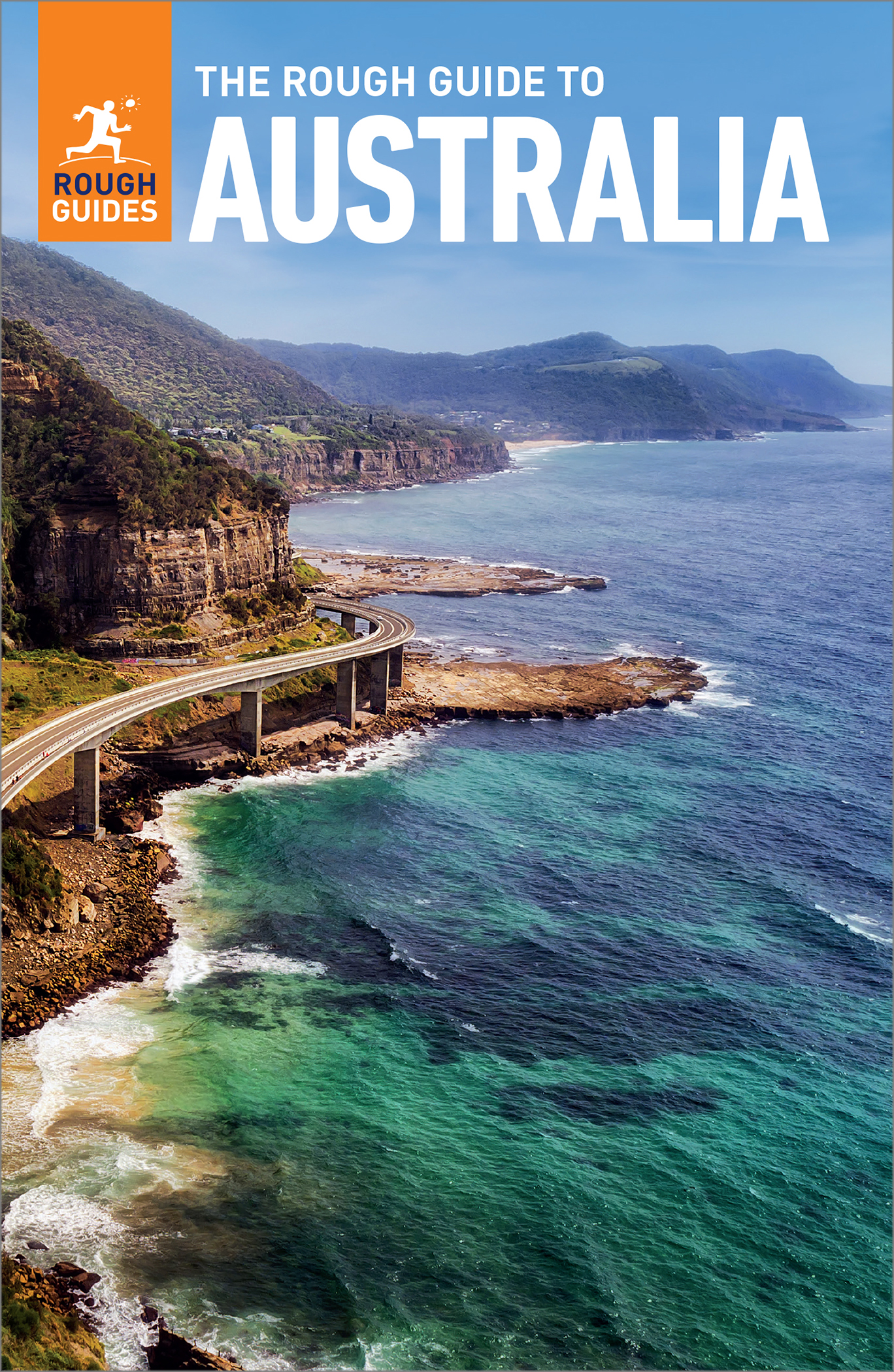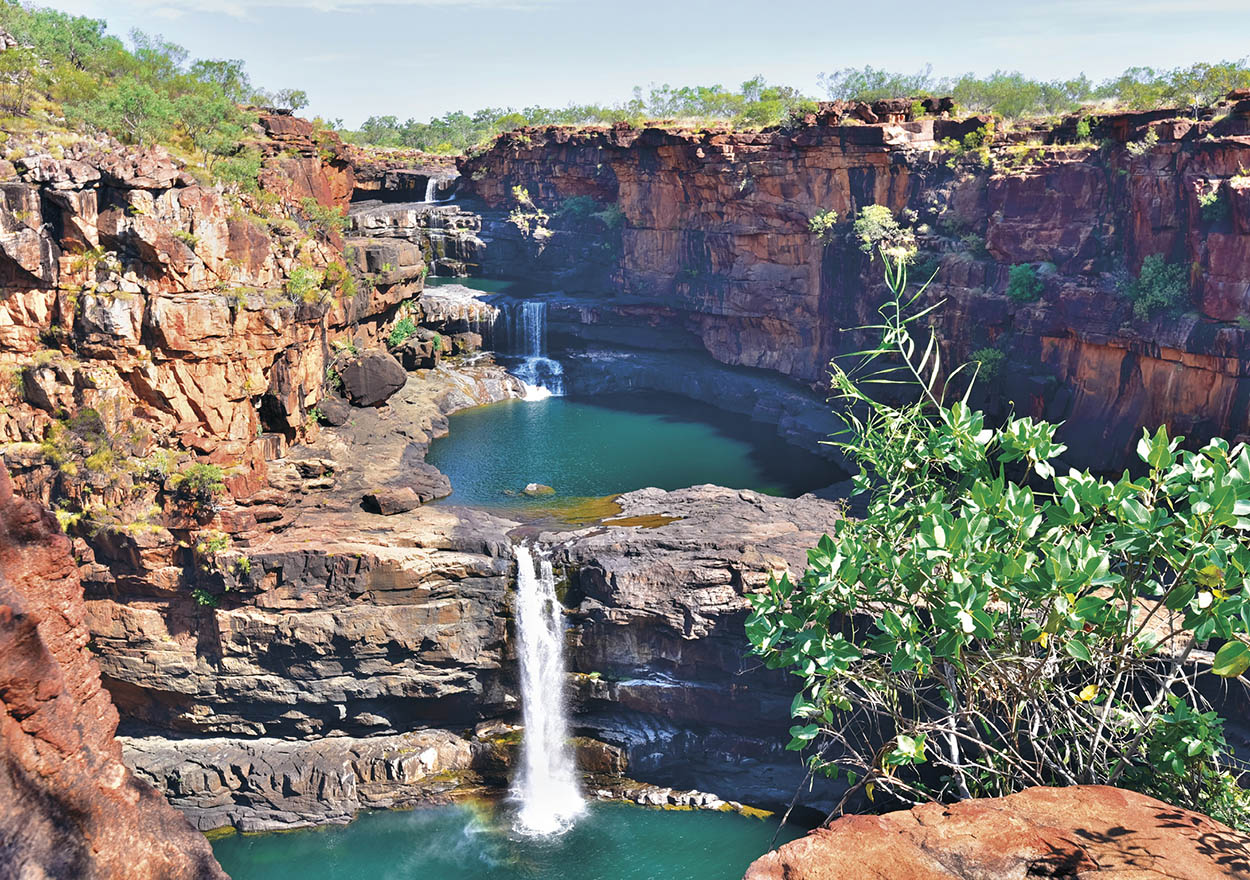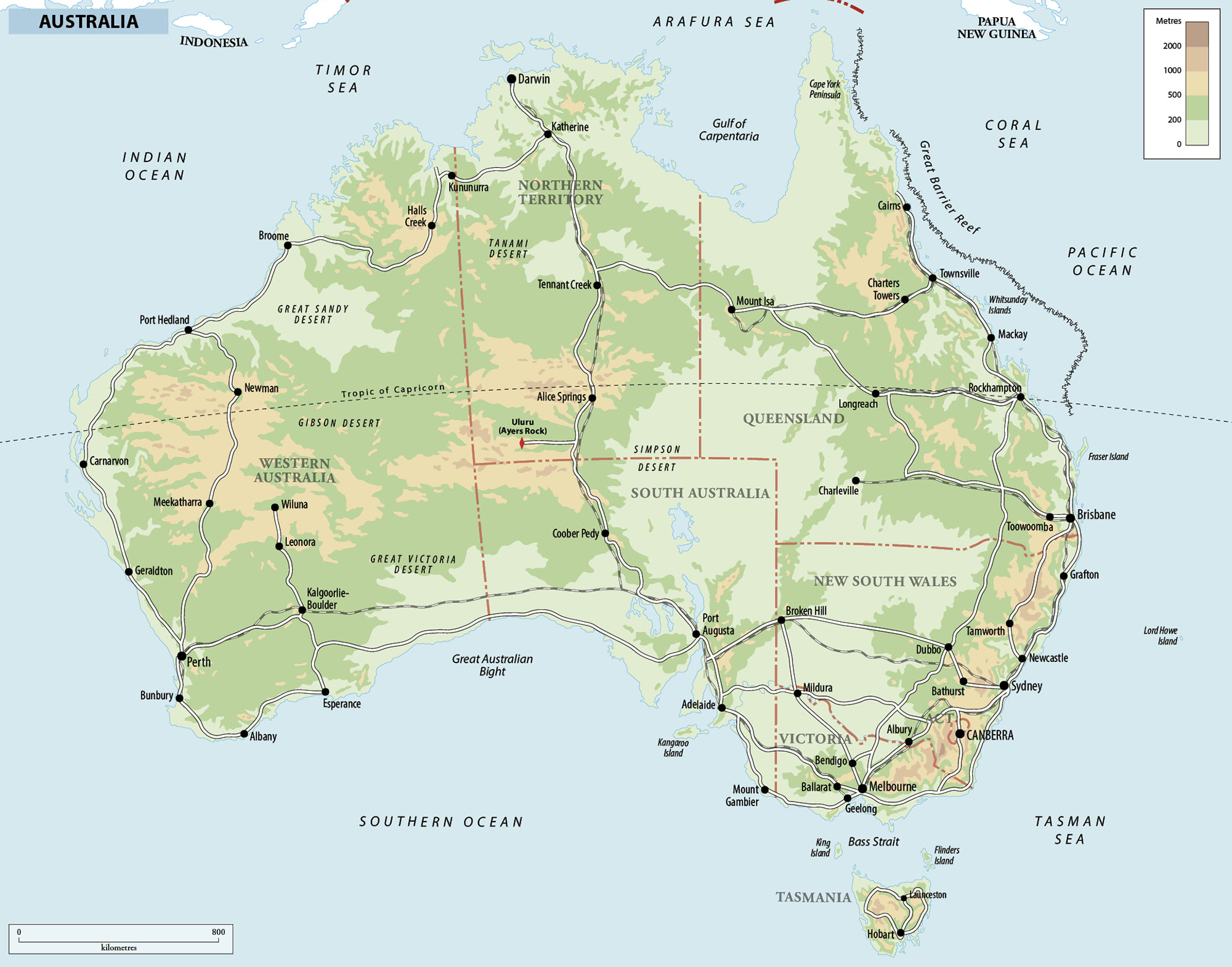Contents
Introduction to Australia
More than most other countries, Australia seizes the imagination. For many visitors, its name is synonymous with endless summers where the living is easy. This is where the adventures are as vast as the horizons, and the jokes flow as freely as the beer a country of can-do spirit and laidback friendliness. No wonder Australians call theirs the Lucky Country.
Every aspect of Australian life and culture, whether its matey attitudes or its truly great outdoors, is a product of the countrys scale and population or lack of it. Australia rivals the USA in size, but is home to only 24 million people, giving it one of the lowest population densities on earth. The energy of its contemporary culture is in contrast to a landscape that is ancient and often looks it: much of central and western Australia the bulk of the country is overwhelmingly arid and flat. In contrast, its cities, most founded as recently as the mid-nineteenth century, burst with a vibrant, youthful energy.
Outback Queensland , the vast area stretching west of the touristed coast, swerves off the well-trodden trail and slides into the countrys epic interior. On the far side of the Great Dividing Range, empty plains sculpted by cinnamon-red earth, deserted gorges and bizarre geological features comprise a unique ecology that is home to the oldest surviving human culture.
This harsh interior has forced Australia to become a coastal country . Most of the population lives within 20km of the ocean, the majority occupying a suburban, southeastern arc that sweeps from southern Queensland to Adelaide. Urban Australians celebrate the values of material self-improvement through hard work and hard play, with an easy-going vitality that visitors, especially Europeans, often find refreshingly hedonistic. A sunny climate also contributes to this exuberance, with an outdoor life in which a thriving beach culture and the congenial backyard barbie are central.
Although visitors might eventually find this low-key, suburban lifestyle rather prosaic, there are opportunities particularly in the Northern Territory to experience the culture of First Nations through visiting ancient art sites, taking tours and, less easily, making personal contact. Many First Nations peoples especially in central Australia have managed to maintain a traditional lifestyle (albeit with modern amenities), speaking their own languages and living by their own laws. Conversely, many First Nations peoples in cities and country towns experience racism, poverty and lack of meaningful employment opportunities. Theres still a long way to go before Black and white people in Australia can exist on genuinely equal terms.
Fact file
- With an area of just over 7.5 million square kilometres, Australia is the sixth-largest country in the world.
- Australias population is estimated at just over 26 million, of whom some 85 percent live in urban areas. About 57 percent are of European ancestry, 34 percent Oceanian, three percent First Nations, and around 17 percent of Asian origin.
- Much of Australia is arid and flat. One-third is desert and another third steppe or semi-desert. Only six percent of the country rises above 600m in elevation, and its tallest peak , Mount Kosciuszko, is just 2228m high.
- Australias main exports are minerals, metals, fossil fuels, cotton, wool, wine and beef, and its most important trading partners are China, Japan, the EU, South Korea and the USA.
- At 5614km the dingo fence is the longest of its kind in the world, stretching from Jimbour to the cliffs of the Nullarbor Plain. Its around twice the length of the Great Wall of China.
- Australia ranks proudly first in the Human Development Index , which measures a countrys progress by its life expectancy, education and standard of living.
- Around 20 percent of Australians are descended from convicts .
Where to go
For visitors, deciding where to go can mean juggling distance, money and time. You could spend months driving around the Outback, exploring the national parks, or hanging out at beaches; or you could take an all-in, two-week Sydney, Reef and Rock package, encompassing Australias outstanding trinity of must-sees.
Mitchell Falls
Shutterstock
Both options provide thoroughly Australian experiences, but either will leave you with a feeling of having merely scraped the surface of this vast country. The two big natural attractions are the 2000km-long Great Barrier Reef off the Queensland coast, with its complex of islands and underwater splendour, and the brooding monolith of Uluru (Ayers Rock), in the Northern Territorys Red Centre. You should certainly try to see them, although exploration of other parts of the country will bring you into contact with more subtle, but equally rewarding, sights and opportunities.
The cities are surprisingly cosmopolitan: waves of postwar immigration from southern Europe and, more recently, Southeast Asia, have done much to erode Australias Anglocentrism. Each Australian state has a capital stamped with its own personality, and nowhere is this more apparent than in New South Wales, where glamorous Sydney has the iconic landmarks of the Opera House and Harbour Bridge. Elsewhere, the sophisticated caf society of Melbourne (Victoria) contrasts with the lively social scene in Brisbane (Queensland). Adelaide, in South Australia, is smaller and has an old-fashioned charm, while Perth, in Western Australia, camouflages its isolation with a leisure-oriented urbanity. In Hobart, the capital of Tasmania, youll encounter a relaxed small city with a distinct maritime feel. The purpose-built administrative centre of Canberra, in the Australian Capital Territory, often fails to grip visitors, but Darwins continuing regeneration enlivens an exploration of the distinctive Territory.
Aboriginal art
Aboriginal art has entered galleries around the world since the first canvas dot paintings of the central deserts emerged in the 1970s. Though seemingly abstract, early canvases are said to replicate ceremonial sand paintings temporary maps fleetingly revealed to depict sacred knowledge. In the tropics, figurative bark and cave paintings are less enigmatic but much older, though until recently they were ceremonially repainted. The unusual X-ray style found in the Top End details the internal structure of animals.
Away from the suburbs, with their vast shopping malls and quarter-acre residential blocks, is the transitional bush, and beyond that the wilderness of the Outback the quintessential Australian environment. Protected from the arid interior, the east coast has the pick of the countrys greenery and scenery, from the norths tropical rainforests and the Great Barrier Reef to the surf-lined beaches further south. The east coast is backed by the Great Dividing Range, which steadily decreases in elevation as it extends from Mount Kosciuszko (2228m) in New South Wales north into tropical Queensland. Though often overlooked, Tasmania is worth the trip across the Bass Strait: youll be rewarded with vast tracts of temperate wilderness and a wealth of scenery, from jagged alpine mountains to almost English bucolic villages.


